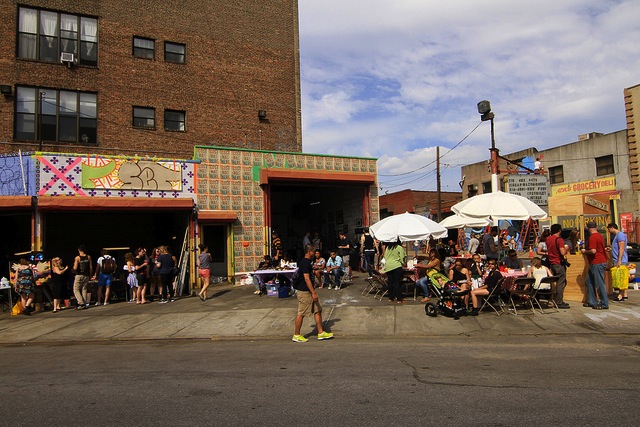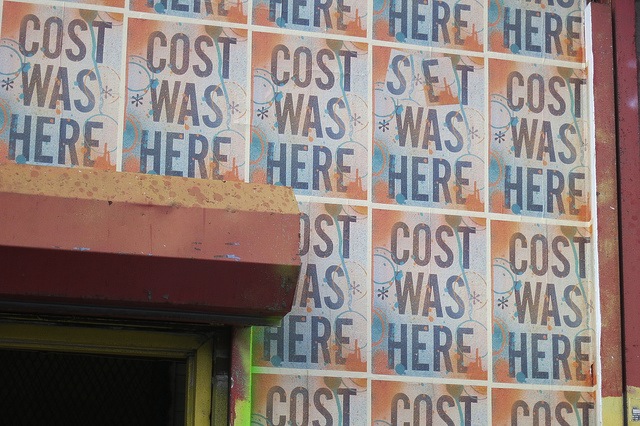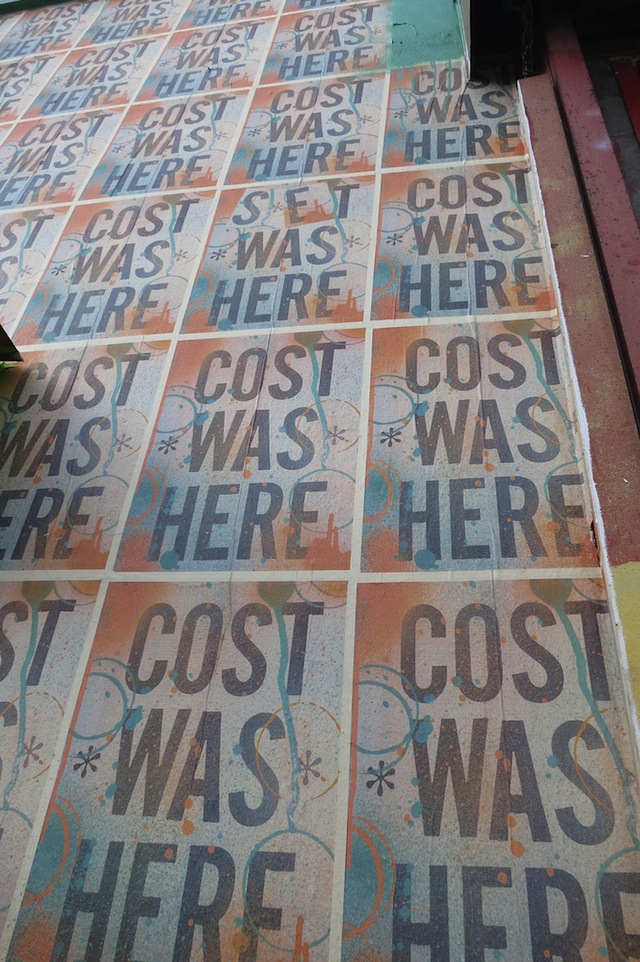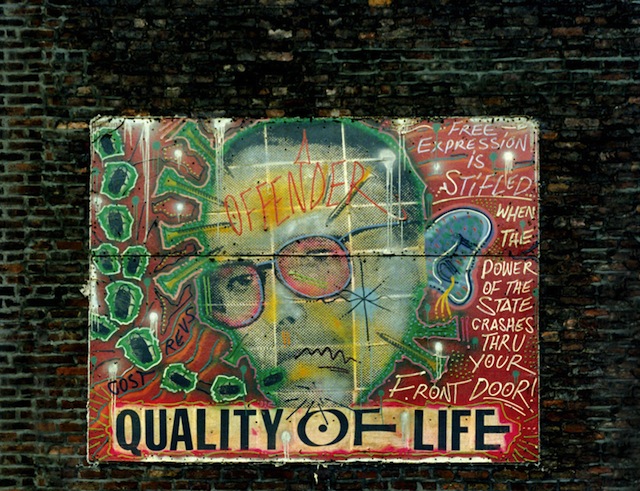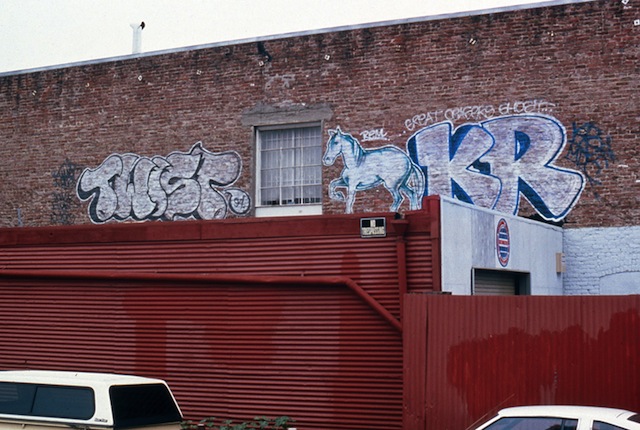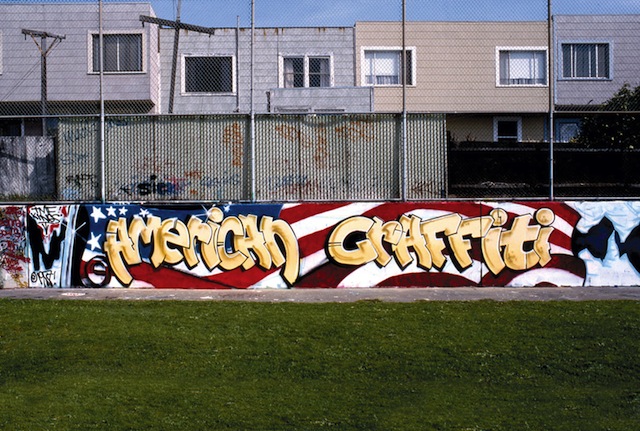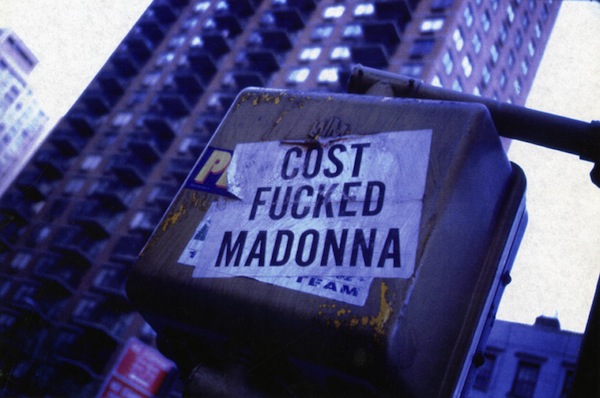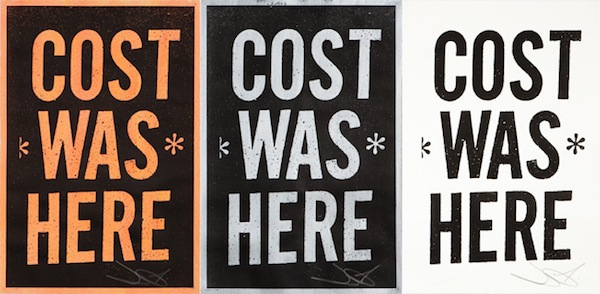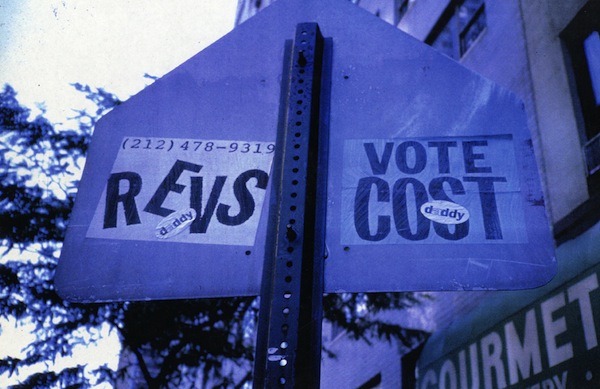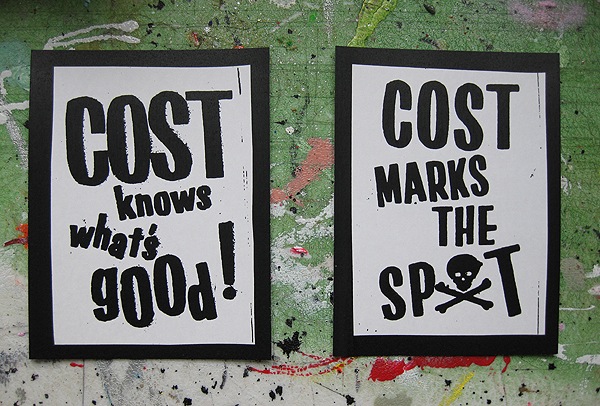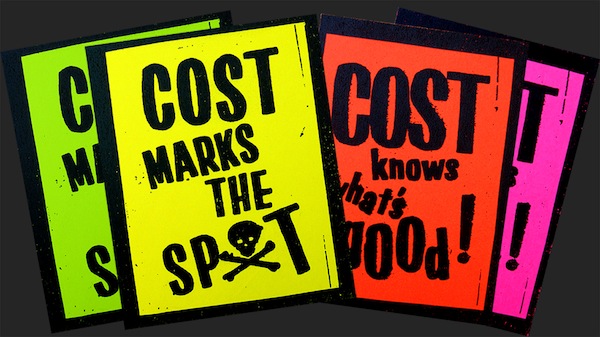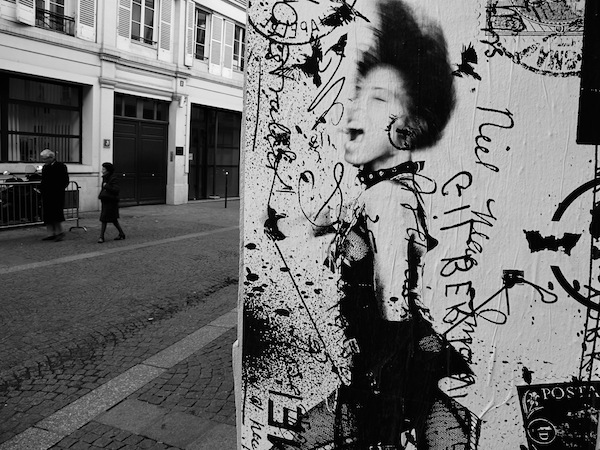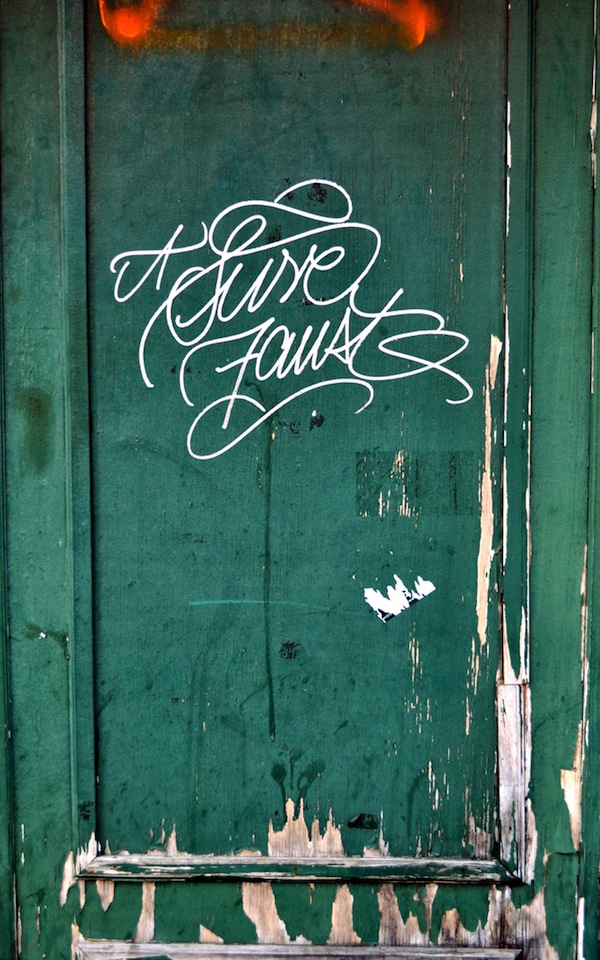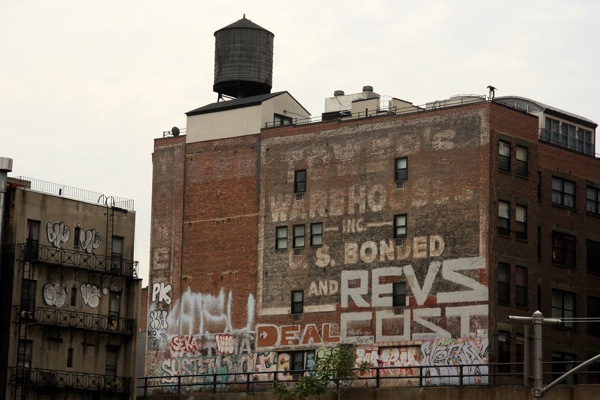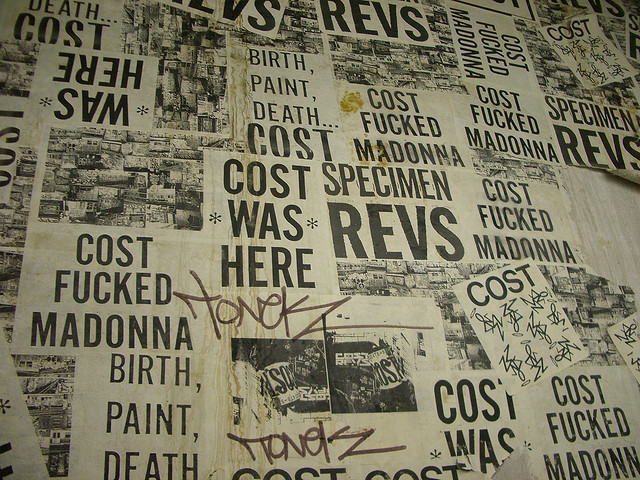
You know him. Rudy Giuliani knows him. At one point, half of the city thought Madonna knew him biblically (for more on that subject, hold your breath for Part two). COST has been ubiquitous in New York City since the late 80’s. He and his counterpart REVS are two of the most widely recognized characters in graffiti and have produced some of the longest running pieces in New York. Nothing captured COST and REVS’ domination of New York in the 90’s better than this Videograff video which asks “Is this art or dangerous propaganda?”
After working under the radar for a number of years after his 1994 arrest, COST has participated in a select few projects with brands such as Brooklynite, Showpaper and Supreme since the fall of 2010. Within the last few months, you may have seen the name COST appearing around New York City again. Despite this, he’s let the work speak for itself and shied away from the spotlight. Vandalog is pleased to publish the first major interview with this reclusive graffiti legend since his 1994 interview with Art Forum. In part one of this interview, COST discusses getting arrested, his hiatus that followed, doing graffiti against the grain and his resurgence among the latest generation of street artists.
V: Why haven’t you tried to make yourself a presence on the internet?
COST: I stay off the internet. The internet is like poison. It really is. I don’t want my face on the internet. There’s a lot of misinterpretation. Anyone can be anyone, say anything. On Facebook there are two people who are posing as me. Things like that make me, I guess, bitter toward the internet.
It’s a good way to connect, that’s true. But I think true graffiti artists have a disconnect with a lot of things in this world. At least I do. I stay disconnected- try to stay disconnected from a lot of stuff and that’s part of why I try to stay off the internet as much as I can. I mean, I’m on a little bit, but there are people out there creating a whole graffiti world on the internet; websites and storylines, bios, all that. They’re selling themselves on the internet and I don’t want to do that.
V: During your wheatpasting campaign the posters that had a phone number received a lot of attention. To be general, why did you do this? And do you think that was the 1993 version of putting, say, “www.COST.com” up like graffiti artists are frequently doing today?
COST: During that time period nobody was doing it. That was a way for the public to contact us. You know, get a little feedback on the shenanigans we pulled around the city. We were having fun, trying to keep it pure and doing what we wanted to do if it felt right at the time and hopefully – maybe not now, but then it was a different thing than what everybody was doing. We were speaking out to the public. So the phone number was kind of like an opportunity for the public to respond or reach back to us and say things. And they had a lot to say.
V: I mean, it is kind of intimidating to see a phone number on a wheatpaste. You don’t know why or why not to call it, or what to be ready for. I dialed it but got nothing.
COST: Well it’s nothing now, but we used to change it up about once a week. Rudy Giuliani was the mayor and he was trying to clean up New York, and obviously if you look around New York now it’s a different town. He cleaned it up. But on the voicemail we went on political rants, spoke about art, philosophy, whatever was on our minds. We spit it out onto the voicemail and it was freedom of speech. That was the beauty of it. We were saying what we wanted, when we wanted and anyone could dial in – for what? ten cents? – Whatever a payphone cost at the time. You never knew what you were gonna hear on it. If I had a bitter day and I was a bitter guy that day and I had something to say about it, I would say it. We didn’t hold back. We said what we felt and what was true to us, REVS and myself. Initially a few people called and before you knew it, thousands of people were calling a day. It kind of got a little out of hand. Checking in on the voicemail, we got everything from death threats to marriage proposals to people telling us to just get a life.
V: What did you think of that?
COST: Some of it was inspiring. Some of it was… some of it would make us go out and do more, you know? It added fuel to the fire. We were young, in our mid twenties – a very rebellious age. I’m 43 now, you get older and mellow out a little bit. We were young and rebellious so we wanted to vent and to tell the city that we didn’t like how it was being run and wanted to switch it up a little bit. We wanted to mix things up, add a little flavor, switch things around. I’m glad people recognize that now.
The funny thing is that now that there’s an international street art boom, it’s like people are remembering it a little more, but at the time it was almost looked down upon. During that time period a lot of people didn’t like what we were doing. They didn’t consider it art because it was very um… neanderthal.
Graffiti at one point got so perfect where everybody was doing perfect lines and the art was so over-perfected. If somebody did a perfect line, we painted a drippy line that dripped everywhere.
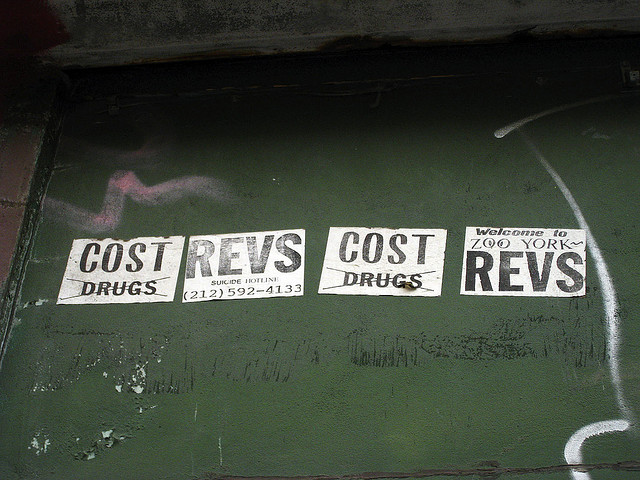
V: Intentionally?
COST: Yeah. We were doing everything against the grain. We just went against the grain of every graffiti and street art standard of the time. A lot of people were very angry that we were prolific. We were out there every night almost. I would say we were putting pressure on the graffiti scene and the street art scene to question what we were doing. And some of them were upset, you know? Because we were changing the rulebook. I don’t know if we were trying to, we were just doing what felt right. Now there’s a whole new rulebook and now people look back say (I’m not here to toot my own horn) but they say “Oh, you guys did good things and helped influence all the street artists now.” And I’ll take it as a compliment.
V: What kept bringing you back? Every night you kept doing this. What was attractive to you about it?
COST: I can speak for REVS on this as well: Neither of us did graffiti for the love of graffiti. It was more like we actually didn’t like it. We probably hated it. It was just self-expression and it was pure. We were just pouring our heart and soul into the streets, and people can take it or leave it. A lot of people didn’t appreciate it then. But now a lot of people look back and -you’re interviewing me so at least Vandalog, or somebody, recognizes that what we meant was true. I hope you can print that. What we did was true, was being true to ourselves. I’m not sure all the street artists are being true to themselves. They see one mural and someone does a mural just like it. I don’t mean to be critical, there are a lot of talented artists out there. Much more talented than me. But do they have something to say? And that’s really what I question. When I look at art, it has to speak to me. If it doesn’t speak to me than what is it? A beautiful portrait? If you said, “Paint me a portrait,” our waitress will paint a better portrait of you than I can. You know what I mean? It’s about the art. The art needs to speak to you, it needs to move you.
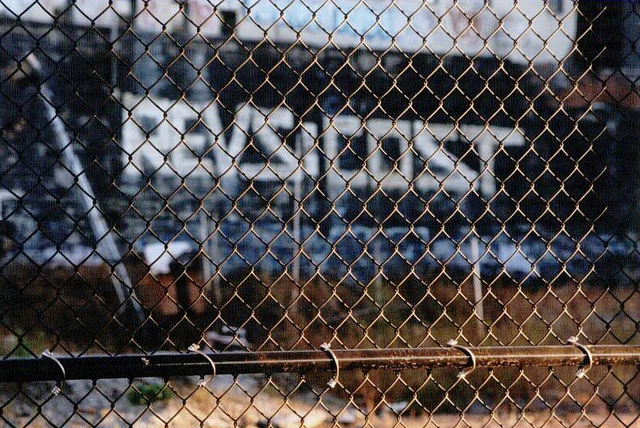
V: How did the release of your identity after you were arrested affect your personal life as well as your graffiti life, which had before been separate?
COST: It made me go deeper undercover I guess. I crawled into a shell and laid lower than the outlaw Jessie James. All of a sudden people who didn’t know that that was me put two and two together. You don’t want people knowing who you are. The idea was to do graffiti, and the idea behind graffiti was to get your name out there but for others to wonder who the heck was doing it. I never did it for a social purpose. Or a financial purpose. I did graffiti for myself and my cohorts and my crew and that was about it. And once my name got out there, it was exploitation in a sense. That’s how I looked at it. It was pretty harmful. But now that the street art/graffiti culture is so accepted, there’s been less hate and more embrace. So I’m not complaining.
COST: After I got caught it just derailed me, like a train. I just went right off track and I got into other things in my life. I was getting a little older, I was in my late twenties. I got into different ventures. I found some success in other areas of my life. I’m trying to figure out how to explain this properly.
It was like I was pushed out of graffiti and street art out by Giuliani and the city with this punishment. They put the cuffs on me and when I was free to roam, I still felt like I had the cuffs on me all the time. I had to make a living so I started a business and I guess I got somewhat successful and I realized that there’s no money in art anyway. There are a few people who make a lot of money off art and then there are the rest; it’s like a pool, a starving pool chasing that dollar. That’s what it seemed like to me. So I got successful in other areas of my life with business and the more successful I got, the more street art and graffiti got away from me. I have my regrets about that because everything I did was very unfulfilling, but I was earning a good living. It left a very empty feeling within because I wasn’t doing what I really wanted to do.
V: Had you done any painting at all during that time?
COST: For the first 5 years after being arrested, I was on hiatus. After that, I painted off and on but it subsided. It felt like I lost my way, like they pushed me out. It’s almost like you choose paths in this life and I wound up going down a different path, and now I really regret it. I feel like I only have about 20 or 25 years to live, I figure 65 years old, anything past that is a blessing. People live longer, but you know what I mean. So I figure with 25 years left to live, anything that I’ve done up to this point since my heavy street art days have been so unfulfilling that I’m going back to street art. I’m willing to sacrifice everything in my life otherwise, at this point. That’s why I’m going back to painting and producing work, because all the money in the world doesn’t give you uh…. what’s the word.. I forgot the word. Shit. You gotta do what feels right in this world and I gotta get back to my painting.
Continue reading “Vandalog interviewed COST – Part one”

